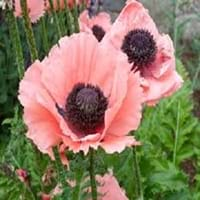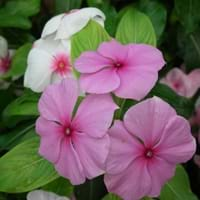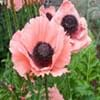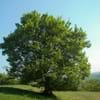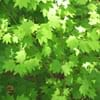Life Span
Perennial
Perennial
Type
Tender Perennial
Flowering Plants, Shrubs
Origin
Western Asia
Madagascar
Types
Not Available
Purple vinca, Vinca, cherry red, strawberry color
Number of Varieties
Not Available
Habitat
Lake margins, Lake Sides, Temperate Regions
Subtropical climates, Tropical regions
USDA Hardiness Zone
3-9
4-9
Sunset Zone
A1, A2, A3, 1a, 1b, 2a, 2b, 3a, 3b, 4, 5, 6, 7, 8, 9, 10, 11, 14, 15, 16, 17, 18, 19, 20, 21
A1, A2, A3, H1, H2, 1a, 1b, 2a, 2b, 3a, 3b, 4, 5, 6, 7, 8, 9, 10, 11, 12, 13, 14, 15, 16, 17, 18, 19, 20, 21, 22, 23, 24
Habit
Upright/Erect
Clump-Forming
Flower Color
Light Pink
Magenta, Pink, Rose
Flower Color Modifier
Bicolor
Not Available
Fruit Color
Not Available
Not Available
Leaf Color in Spring
Green, Gray Green, Dark Green
Dark Green
Leaf Color in Summer
Not Available
Dark Green
Leaf Color in Fall
Green, Gray Green, Dark Green
Dark Green
Leaf Color in Winter
Not Available
Dark Green
Plant Season
Spring, Summer
Fall, Spring, Summer, Winter
Sunlight
Full Sun, Partial Sun
Partial shade
Type of Soil
Loam
Loamy, Sandy, Well drained
The pH of Soil
Acidic, Neutral, Alkaline
Neutral, Slightly Alkaline
Soil Drainage
Well drained
Well drained
Bloom Time
Late Spring, Early Summer
Fall, Spring, Summer
Tolerances
Not Available
Drought, Pollution, Salt
Where to Plant?
Container, Ground, Pot
Container, Ground, Pot
How to Plant?
root cutting
Seedlings, Stem Planting, Transplanting
Plant Maintenance
Medium
Medium
Watering Requirements
Keep the Soil well drained
Does not require lot of watering, Medium
In Summer
Lots of watering
Lots of watering
In Spring
Moderate
Moderate
In Winter
Average Water
Average Water
Soil pH
Acidic, Neutral, Alkaline
Neutral, Slightly Alkaline
Soil Type
Loam
Loamy, Sandy, Well drained
Soil Drainage Capacity
Well drained
Well drained
Sun Exposure
Full Sun, Partial Sun
Partial shade
Pruning
Cut away fading foliage, Prune after flowering, Remove damaged leaves, Remove dead branches, Remove dead leaves
Prune ocassionally
Fertilizers
10-52-17 after germination, All-Purpose Liquid Fertilizer
All-Purpose Liquid Fertilizer
Pests and Diseases
Pests and diseases free, Red blotch
Botrytis Blight, Canker, Crown rot, Pythium rot, Root rot
Plant Tolerance
Deer resistant, Drought
Drought
Flower Petal Number
Single
Single
Foliage Texture
Medium
Medium
Foliage Sheen
Matte
Glossy
Attracts
Not Available
Butterflies
Allergy
Skin irritation
Intestinal gas, Nausea, Vomiting
Aesthetic Uses
along a porch, deck or patio, Beautification, Borders, Cottage Garden, Mixed Border, small hedge
Beautification, Showy Purposes
Beauty Benefits
Not Available
Not Available
Edible Uses
Not Available
No
Environmental Uses
Air purification, Deer resistant
Air purification
Medicinal Uses
Not Available
Chest pain, High blood pressure, Inflammation, Sore throat, Tooth ache, Wounds
Part of Plant Used
Flowers, Whole plant
Whole plant
Other Uses
Beneficial species for attracting pollinators, Showy Purposes
Decoration Purposes, Showy Purposes, Used as Ornamental plant
Used As Indoor Plant
No
Yes
Used As Outdoor Plant
Yes
Yes
Garden Design
Feature Plant, Mixed Border
Bedding Plant, Container, Edging
Botanical Name
PAPAVER orientale 'Carneum'
Catharanthus roseus
Common Name
Oriental Poppy, Pink Oriental Poppy
Madagascar periwinkle or rosy periwinkle
In Hindi
ओरिएंटल पोस्ता
Periwinkle
In German
Türkischer Mohn
Immergrün
In French
pavot oriental
Pervenche
In Spanish
amapola oriental
Bígaro
In Greek
oriental poppy
μυρτιά
In Portuguese
papoila oriental
Mirta
In Polish
orientalne maku
Barwinek
In Latin
oriental poppy
Periwinkle
Phylum
Angiosperms
Mollusca
Class
Magnoliopsida
Gastropoda
Order
Ranunculales
Geraniales
Family
Papaveraceae
Apocynaceae
Genus
Papaver
Catharanthus
Clade
Eudicots
Not Available
Tribe
Not Available
Not Available
Subfamily
Magnolioideae
Not Available
Season and Care of Pink Oriental Poppy and Periwinkle
Season and care of Pink Oriental Poppy and Periwinkle is important to know. While considering everything about Pink Oriental Poppy and Periwinkle Care, growing season is an essential factor. Pink Oriental Poppy season is Spring and Summer and Periwinkle season is Spring and Summer. The type of soil for Pink Oriental Poppy is Loam and for Periwinkle is Loamy, Sandy, Well drained while the PH of soil for Pink Oriental Poppy is Acidic, Neutral, Alkaline and for Periwinkle is Neutral, Slightly Alkaline.
Pink Oriental Poppy and Periwinkle Physical Information
Pink Oriental Poppy and Periwinkle physical information is very important for comparison. Pink Oriental Poppy height is 76.20 cm and width 45.70 cm whereas Periwinkle height is 1.97 cm and width 2.96 cm. The color specification of Pink Oriental Poppy and Periwinkle are as follows:
Pink Oriental Poppy flower color: Light Pink
Pink Oriental Poppy leaf color: Green, Gray Green and Dark Green
Periwinkle flower color: Magenta, Pink and Rose
- Periwinkle leaf color: Dark Green
Care of Pink Oriental Poppy and Periwinkle
Care of Pink Oriental Poppy and Periwinkle include pruning, fertilizers, watering etc. Pink Oriental Poppy pruning is done Cut away fading foliage, Prune after flowering, Remove damaged leaves, Remove dead branches and Remove dead leaves and Periwinkle pruning is done Prune ocassionally. In summer Pink Oriental Poppy needs Lots of watering and in winter, it needs Average Water. Whereas, in summer Periwinkle needs Lots of watering and in winter, it needs Average Water.
